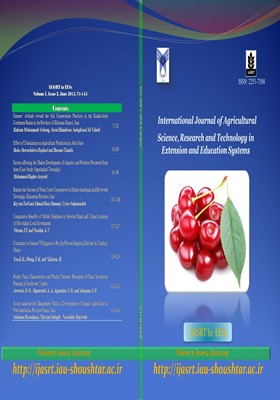Due to various policies measures to curtail the virus, one of which was lockdown, the occurrence of COVID-19 had a negative impact on the nation's economy, especially the rural smallholder farmers. The study looked into how Covid-19 lockdowns affected Nigerian vegetable
More
Due to various policies measures to curtail the virus, one of which was lockdown, the occurrence of COVID-19 had a negative impact on the nation's economy, especially the rural smallholder farmers. The study looked into how Covid-19 lockdowns affected Nigerian vegetable production. Descriptive statistics, budgetary approaches, multiple regression analysis, and a Likert scale were all used for the analysis. The findings show that most of vegetable growers in the research region were married women (88.33%). About 70% of respondents have completed at least their primary education. The multiple regression analysis results disclosed that number of extensions contact, farm size, market access and transportation cost were significantly affected the level of vegetable production with positive sign while household size had a negative effect on the vegetable production. The findings also showed that after the COVID-19 lockdown, vegetable production was extremely profitable in the study area, with an average gross margin of 82,836.04 that was statistically higher than the 60,709.97 gross margin generated from vegetable production during COVID-19 and the 71,234.91 gross margin generated prior to COVID-19. The constraints faced by vegetable farmers during the covid – 19 restrictions include: high cost of transportation, price fluctuation, and high cost of input, perishability of the produce and lack of improved seeds. It was concluded that Covid 19 pandemic has greater effect on vegetable production in the study areas
Manuscript profile


